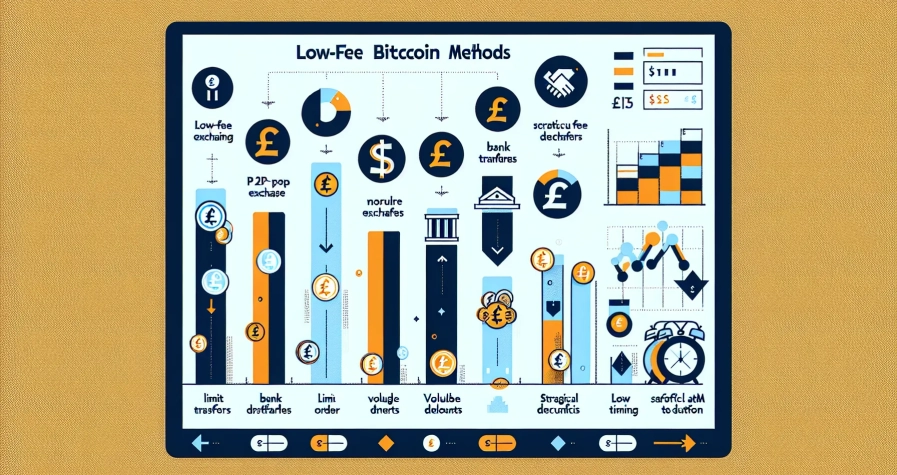Key Takeaways
- Whitepapers are essential research tools that serve as comprehensive blueprints combining technical specifications and business strategies, helping investors distinguish legitimate cryptocurrency projects from potential scams.
- Key components include problem statements, technical architecture, tokenomics, and team credentials – all crucial elements that enable thorough project evaluation and informed investment decisions.
- Bitcoin and Ethereum’s whitepapers revolutionised the industry by introducing groundbreaking concepts like decentralised peer-to-peer transactions and programmable smart contracts that continue to shape blockchain development today.
- Look for clear technical explanations, realistic roadmaps, and verifiable team information whilst avoiding projects with vague promises, anonymous teams, or plagiarised content that signal potential red flags.
- Modern whitepapers have evolved from purely technical documents into sophisticated marketing tools that balance technical depth with visual elements and regulatory compliance considerations to appeal to diverse audiences.
- Reading whitepapers systematically protects your investments by providing the foundational knowledge needed to assess project legitimacy, technical feasibility, and long-term viability before committing funds.
You’ve probably heard crypto enthusiasts mention whitepapers when discussing new projects or established coins like Bitcoin. These documents might seem intimidating at first but they’re actually your gateway to understanding what makes each cryptocurrency tick.
A crypto whitepaper is essentially a project’s business plan and technical blueprint rolled into one comprehensive document. It explains the problem the cryptocurrency aims to solve how the technology works and why you should consider investing your time or money in it. Think of it as your roadmap to making informed decisions in the crypto space.
Whether you’re a complete beginner trying to understand Bitcoin’s original whitepaper or an experienced investor evaluating the next big altcoin these documents contain the crucial information you need. They separate legitimate projects from potential scams and help you grasp the underlying technology before putting your hard-earned money at stake.
What Is a Crypto Whitepaper?
A crypto whitepaper functions as the foundational document that presents a cryptocurrency project’s technical specifications and business strategy. This comprehensive document establishes the project’s credibility whilst providing investors with detailed insights into the underlying technology.
Definition and Core Purpose
A cryptocurrency whitepaper represents a detailed technical document that outlines a blockchain project’s methodology, objectives and implementation strategy. You encounter this document as the primary source of information when researching new cryptocurrency investments.
The core purpose centres on transparency and education for potential investors and developers. Crypto whitepapers serve three fundamental functions:
- Technical explanation – Details the blockchain architecture, consensus mechanisms and cryptographic protocols
- Problem identification – Defines the specific market gap or technological challenge the project addresses
- Solution presentation – Demonstrates how the proposed cryptocurrency resolves identified issues through innovative approaches
These documents differentiate legitimate projects from speculative ventures by providing verifiable technical information and realistic development roadmaps.
Key Components of a Whitepaper
Crypto whitepapers contain standardised sections that deliver comprehensive project information. You’ll find these essential components across most professional cryptocurrency documents:
| Component | Description | Purpose |
|---|---|---|
| Executive Summary | 1-2 page overview of project goals | Quick assessment for time-constrained readers |
| Problem Statement | Market gap identification | Establishes project necessity |
| Technical Architecture | Blockchain specifications and protocols | Demonstrates technical feasibility |
| Token Economics | Supply distribution and utility functions | Explains value proposition |
| Roadmap | Development milestones and timelines | Shows project progression plan |
| Team Information | Developer backgrounds and experience | Builds credibility and trust |
Market analysis sections examine competitive landscapes and target demographics. These segments demonstrate the project’s understanding of existing solutions and market positioning strategies.
Use cases provide practical applications for the cryptocurrency technology. You discover how the token integrates into real-world scenarios and generates actual utility value.
Risk assessment acknowledges potential challenges and mitigation strategies. Professional whitepapers address regulatory concerns, technical limitations and market volatility factors transparently.
The Role of Whitepapers in Cryptocurrency Projects
Whitepapers serve as the cornerstone of cryptocurrency projects by establishing credibility and facilitating informed decision-making within the blockchain ecosystem. These documents fulfill critical functions that extend beyond simple project descriptions to become essential tools for project validation and community engagement.
Building Trust and Transparency
Trust formation begins when cryptocurrency projects openly share detailed information through comprehensive whitepapers. You gain access to transparent disclosure of project goals, technical approaches, and potential risks that enable thorough evaluation of investment opportunities. Projects demonstrate their commitment to accountability by providing clear explanations of their blockchain architecture, consensus mechanisms, and economic models.
Transparency manifests through several key disclosure practices:
- Financial transparency showing token allocation, funding mechanisms, and revenue models
- Operational transparency detailing development progress, milestone achievements, and future objectives
- Technical transparency explaining smart contract functionality, security measures, and scalability solutions
- Governance transparency outlining decision-making processes and community participation methods
Credibility increases when whitepapers include verifiable team credentials, advisor backgrounds, and partnership agreements. You can assess project legitimacy by examining the depth of technical detail, realistic timeline projections, and acknowledgment of potential challenges or limitations.
Technical Documentation and Specifications
Technical specifications form the backbone of cryptocurrency whitepapers by providing detailed explanations of blockchain architecture and implementation strategies. You encounter comprehensive descriptions of consensus algorithms, cryptographic methods, and network protocols that govern project functionality.
Core technical elements typically documented include:
| Component | Description | Purpose |
|---|---|---|
| Blockchain Architecture | Network structure and node configuration | Defines system scalability and security |
| Consensus Mechanism | Validation process for transactions | Ensures network integrity and performance |
| Smart Contracts | Automated execution protocols | Enables programmable functionality |
| Cryptographic Security | Encryption and hashing methods | Protects user data and transaction privacy |
| Token Standards | Technical specifications for digital assets | Ensures compatibility and interoperability |
Documentation quality reflects project sophistication through precise technical language, detailed algorithm explanations, and clear implementation roadmaps. You can evaluate technical feasibility by examining the specificity of proposed solutions, compatibility with existing blockchain infrastructure, and acknowledgment of potential technical limitations or trade-offs.
Famous Crypto Whitepapers That Changed the Industry
Certain whitepapers have fundamentally transformed the cryptocurrency landscape by introducing groundbreaking concepts that continue to shape the industry today. These influential documents demonstrate how comprehensive technical documentation can revolutionise financial systems and technological frameworks.
Bitcoin’s Revolutionary Whitepaper
Bitcoin’s whitepaper, published by Satoshi Nakamoto in 2008, introduced the world’s first decentralised digital currency system. You can trace every subsequent cryptocurrency innovation back to the foundational concepts outlined in this 9-page document titled “Bitcoin: A Peer-to-Peer Electronic Cash System.”
The whitepaper solved the double-spending problem through blockchain technology and proof-of-work consensus mechanisms. Nakamoto’s document eliminated the need for trusted third parties by creating a system where network participants validate transactions through computational work. This breakthrough enabled peer-to-peer electronic cash transactions without relying on banks or payment processors.
Digital scarcity emerged as a core innovation through Bitcoin’s predetermined supply cap of 21 million coins. The whitepaper established cryptographic proof as the foundation for trust rather than traditional institutional guarantees. These concepts revolutionised finance and inspired thousands of subsequent blockchain projects that reference Bitcoin’s technical architecture.
Ethereum and Smart Contract Innovation
Ethereum’s whitepaper, released by Vitalik Buterin in 2013, expanded blockchain functionality beyond simple currency transfers. You gain access to programmable smart contracts through Ethereum’s Turing-complete programming language implemented via the Ethereum Virtual Machine (EVM).
Smart contracts execute automatically when predetermined conditions are met, eliminating intermediaries in complex transactions. The whitepaper outlined how developers could build decentralised applications (dApps) on Ethereum’s platform using standardised protocols. This innovation created the foundation for decentralised finance (DeFi) ecosystems and non-fungible token (NFT) markets.
Token issuance standards like ERC-20 emerged from Ethereum’s technical specifications, enabling thousands of projects to launch their cryptocurrencies. The whitepaper’s vision of a “world computer” materialised through programmable blockchain infrastructure that supports everything from lending protocols to digital art marketplaces. Ethereum’s documentation demonstrated how clear technical communication could attract developer communities and institutional investment, catalysing the broader blockchain ecosystem’s evolution.
How to Read and Evaluate a Crypto Whitepaper
Reading and evaluating crypto whitepapers effectively requires a systematic approach that focuses on specific elements whilst identifying potential warning signs. You’ll find that understanding these key components enables informed investment decisions and protects against fraudulent projects.
Essential Elements to Look For
Project Purpose and Problem Statement: You must verify that the whitepaper clearly identifies a real-world problem and explains why blockchain technology offers the optimal solution. The document should provide credible data supporting the problem’s existence and demonstrate a genuine understanding of market needs rather than creating artificial demand for the token.
Technical Architecture Details: Examine the technical specifications that outline the blockchain’s consensus mechanism, smart contract functionality and security protocols. Professional whitepapers include sufficient technical depth for peer review whilst avoiding overly complex jargon that obscures fundamental concepts. You’ll recognise quality projects by their transparent approach to explaining how their technology functions and integrates with existing systems.
Tokenomics and Distribution Model: Analyse the token’s utility within the ecosystem, including supply mechanics, distribution schedules and economic incentives. The whitepaper should detail how tokens create value, the allocation percentages for different stakeholders and vesting schedules for team members. Fair distribution models typically allocate reasonable portions to public sales whilst reserving appropriate amounts for development and ecosystem growth.
Development Roadmap and Milestones: Review the project timeline for realistic development phases, specific deliverables and measurable objectives. Quality whitepapers present achievable milestones with clear timelines rather than vague promises about revolutionary changes. You should verify that the roadmap aligns with the project’s technical complexity and available resources.
Team Credentials and Advisory Board: Investigate the backgrounds of core team members, advisors and development partners listed in the whitepaper. Reputable projects feature team members with verifiable experience in blockchain development, business operations or relevant industry expertise. The document should include LinkedIn profiles, previous project involvement and educational backgrounds that support the team’s capability to execute the proposed solution.
Red Flags and Warning Signs
Vague Technical Explanations: Avoid projects that use excessive jargon without providing substantive technical details or rely on buzzwords instead of concrete explanations. Whitepapers lacking specific information about blockchain architecture, consensus mechanisms or smart contract functionality often indicate insufficient technical development or deliberate obfuscation of project limitations.
Unrealistic Promises and Timelines: Be cautious of whitepapers that promise revolutionary breakthroughs without acknowledging technical challenges or present aggressive development timelines that don’t align with blockchain project complexity. Projects claiming to solve multiple unrelated problems simultaneously or guarantee extraordinary returns typically indicate overpromising and potential fraud.
Missing or Unverifiable Team Information: Red flags include anonymous teams without disclosed credentials, team members with fabricated backgrounds or projects lacking advisory board information. You should immediately question whitepapers that don’t provide verifiable LinkedIn profiles, previous project experience or educational qualifications for key personnel.
Plagiarised Content and Poor Quality: Watch for copied sections from other whitepapers, frequent grammatical errors or unprofessional presentation that suggests rushed development. Quality projects invest in professional documentation, original content creation and thorough proofreading that reflects their commitment to excellence and attention to detail.
Unclear Token Utility and Economics: Avoid projects where the token’s purpose remains vague, the economic model lacks sustainability or the distribution heavily favours founders and early investors. Whitepapers should clearly explain why the token exists within the ecosystem, how it generates value and why blockchain technology specifically requires a native token rather than existing payment methods.
The Evolution of Crypto Whitepapers
Crypto whitepapers have transformed dramatically since Bitcoin’s original publication in 2008. You’ll notice how these documents evolved from purely technical specifications into sophisticated marketing instruments that balance technical depth with investor appeal.
From Technical Documents to Marketing Tools
Early crypto whitepapers focused exclusively on blockchain architectures, consensus algorithms, and cryptographic principles. Bitcoin’s whitepaper exemplified this approach by presenting a straightforward technical solution to the double-spending problem without marketing language or investment promises.
Today’s whitepapers incorporate extensive marketing elements alongside technical explanations. You’ll find detailed sections covering use cases, potential returns, team backgrounds, and strategic partnerships. This shift helps projects differentiate themselves in a competitive market where thousands of cryptocurrencies compete for investor attention.
Modern whitepapers emphasise community building and real-world applications rather than purely theoretical concepts. Projects now highlight their competitive advantages, market positioning, and growth strategies to appeal to both technical developers and mainstream investors.
Modern Trends and Formats
Contemporary crypto whitepapers follow structured formats that enhance readability and investor engagement. You’ll typically encounter concise executive summaries followed by detailed sections covering problem context, solution overviews, technical architecture, and token distribution models.
Visual elements have become standard components in modern whitepapers. Projects incorporate diagrams, charts, and infographics to explain complex blockchain concepts and tokenomics structures. These visual aids make technical information accessible to non-technical readers whilst maintaining depth for experienced developers.
Current whitepapers integrate governance models and emphasise regulatory compliance considerations. You’ll find sections dedicated to legal disclaimers, regulatory frameworks, and decentralised governance structures that reflect the industry’s maturation and institutional adoption.
Development roadmaps now include specific milestones, delivery timelines, and success metrics rather than vague future promises. This trend towards accountability demonstrates how the crypto industry has evolved to meet professional investment standards whilst maintaining its innovative technical foundation.
Conclusion
Crypto whitepapers remain your most valuable resource for understanding and evaluating blockchain projects. They’ve evolved from purely technical documents into comprehensive guides that balance innovation with practical application whilst maintaining the transparency that’s crucial for your investment decisions.
Your ability to read and analyse these documents effectively determines your success in navigating the crypto landscape. By focusing on technical feasibility team credentials and tokenomics you’ll distinguish legitimate projects from potential scams.
As the industry continues maturing whitepapers will likely become even more sophisticated. They’ll incorporate enhanced regulatory compliance and governance structures whilst maintaining their core purpose: providing you with the knowledge needed to make informed cryptocurrency investments.
Frequently Asked Questions
What is a crypto whitepaper?
A crypto whitepaper is a comprehensive document that outlines a cryptocurrency project’s technical specifications, business strategy, and underlying blockchain technology. It serves as both a technical guide and business plan, explaining the problem the project addresses, how the technology works, and why investors should consider the project. Whitepapers are essential for establishing credibility and providing transparency in the cryptocurrency space.
Why are crypto whitepapers important for investors?
Crypto whitepapers provide critical information to help investors distinguish legitimate projects from scams and understand the technology before investing. They offer detailed insights into the project’s technical architecture, market analysis, token economics, and development roadmap. By thoroughly reading whitepapers, investors can make informed decisions and assess whether a project has genuine utility and long-term viability.
What are the key components of a crypto whitepaper?
Essential components include an executive summary, problem statement, technical architecture, token economics (tokenomics), development roadmap, and team information. Professional whitepapers also feature market analysis, use cases, risk assessment, and governance models. These sections work together to provide comprehensive project information, demonstrate the team’s expertise, and build credibility with potential investors and developers.
How do I evaluate a crypto whitepaper effectively?
Focus on key elements such as project purpose, technical architecture clarity, realistic tokenomics, detailed development roadmap, and verifiable team credentials. Watch for red flags including vague technical explanations, unrealistic promises, unverifiable team information, plagiarised content, and unclear token utility. A systematic approach examining these aspects helps identify legitimate projects and avoid fraudulent schemes.
What are some famous crypto whitepapers that changed the industry?
Bitcoin’s whitepaper (2008) by Satoshi Nakamoto introduced the first decentralised digital currency system, solving the double-spending problem and establishing digital scarcity. Ethereum’s whitepaper (2013) by Vitalik Buterin expanded blockchain functionality with programmable smart contracts, enabling decentralised applications (dApps) and fostering the growth of DeFi and NFT markets. Both documents fundamentally transformed financial systems and technological frameworks.
How have crypto whitepapers evolved since Bitcoin?
Modern whitepapers have transformed from purely technical documents into sophisticated marketing tools that balance technical depth with investor appeal. Contemporary versions include visual elements like diagrams and infographics, incorporate governance models and regulatory compliance considerations, and feature structured roadmaps with specific milestones. This evolution reflects the industry’s maturation and increased focus on attracting both technical developers and mainstream investors.








